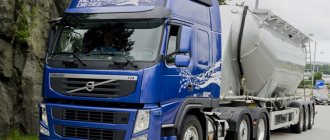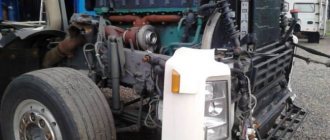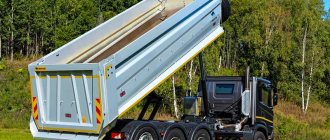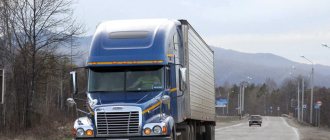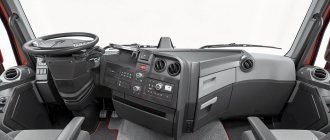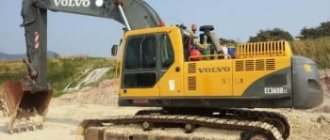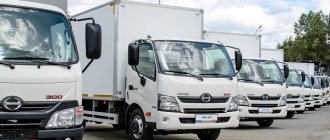Do you know where Volvos are made? The country of origin of this car deserves all the praise. It is produced in Sweden. The car is produced by the Swedish concern Aktiebolaget Volvo. The concern deals with commercial and trucks, engines and various equipment. Previously, it was possible to purchase passenger cars from the Volvo concern. Unfortunately, in 1999, the passenger car branch was sold to the Ford concern, called Volvo Personvagnar. In turn, Ford transferred it to the Geely concern.
The headquarters of the concern is located in the Swedish city of Gothenburg. From Latin, “volvo” translates as “I roll” or “I spin.”
Chinese Geely cars after cooperation with the Swedes
Immediately after the merger of European and Chinese manufacturers under the roof of one concern, Geely had new models that were three heads higher than their predecessors.
In fact, the entire model range has changed, new engines began to produce more horses, requiring less fuel. And the appearance of the Emgrand series has greatly advanced. We invite you to enjoy the video test drive of the new Emgrand EC7
Video:
A crossover, which had not been announced before, even appeared in the Geely model line. Such changes are associated with the following development options for the company:
- despite the ban on the use of Volvo technologies, the Chinese pulled certain developments of the Swedes to their side;
- as a result of bilateral cooperation with European engineers, new developments were obtained;
- the company received a good income-generating asset and was able to invest in its own production;
- Engineers from Sweden were invited to work in China.
The last assumption is a tested and proven fact. But Geely denies the fact that this is related to the development of the successful Engrand series of cars. However, for the consumer there is no difference. If a company produces good cars, let it take technology where it is more convenient for it. What is more important for the consumer is how high-quality a car he can purchase at the dealership. That is why the Swedes today are quite happy with their seven-year cooperation with the Chinese.
The plant in Gothenburg is growing and developing, the brand is acquiring new models, and the Geely corporation is fulfilling all its main promises.
Volvo in Sweden
Country of manufacture of Renault and the main models of the brand in Russia.
Country manufacturer of Renault cars, factories in Russia Russian-assembled Renault In 1964, Volvo Cars in Torslanda opened a completely new automobile plant, investing in it the largest investment in the industrial history of Sweden. For fifty years, thousands of people have been busy implementing the bold projects of the best designers. Starting from the very first Volvo Amazon model, management took the right direction for the development of the brand. Half a century later, the Torslanda plant has undergone a radical change and modernization and its new opening is scheduled for April 24, 2014. The first model released after the reconstruction will be the XC90.
Volvo trucks are assembled in Zelenograd
V. Mamedov
Volvo Truck Corporation (VTC) became the first foreign truck manufacturer to create an assembly plant for its trucks in Russia. To the 15 VTC assembly plants in different countries of the world, a Russian one has been added, with an initial capacity of 200 - 300 cars per year, which is located in the Northern District of the capital. The enterprise, inaugurated on March 20, 2003, has the status of a joint venture - the Russian Joint-Stock Industrial and Financial Corporation "Sistema" is VTC's partner. The memorandum of understanding, within the framework of which the plant was created, was signed with her on November 24, 1999.
“With the launch of the joint venture, which will be called VTS Zelenograd,” noted Lars Corneliusson, head of the Volvo Truck Corporation representative office in Russia, on the eve of the plant’s launch, “we are opening a new page in the history of Volvo’s development in the Russian market. Given the relatively stable political situation and significant growth in economic indicators in the country, Volvo management believes that the time to establish an industrial presence in Russia has been chosen correctly!” And here is the opinion of Jorma Halonen, President and CEO of Volvo Truck Corporation, about this event: “Having an industrial base in Moscow, we have strengthened our position in Russia. To grow with the market, we need to have a presence in the country.”
VTC partner AFK Sistema is one of the largest diversified holdings in Russia. More than 70% of its assets are concentrated in high-tech businesses. Founded in 1993, Sistema currently owns and manages more than 200 enterprises in various industries. Her areas of interest are telecommunications (the structure of Sistema Telecom includes more than 16 companies that provide over 15% of local services in Russia, as well as 3% of long-distance and international telephony), electronics (the Scientific Center concern, which is part of AFK, is the largest in Russia research and production complex of the electronics industry), real estate and construction (ZAO Sistema-Hals - 25 specialized enterprises and 2 million m2 of real estate), insurance (insurance company ROSNO - part of AFK Sistema), radio engineering (network of institutes and industrial objects), oil and oil products, trade (TD "Detsky Mir"), finance (banks and institutions), tourism (VAO "Intourist") and mass media ("Literaturnaya Gazeta", St. Petersburg "Smena").
Commenting on cooperation with VTC, Sistema President E. Novitsky emphasized that this project is part of AFK’s policy of attracting the world’s leading companies as strategic partners.
Before the start of the assembly of Volvo trucks, the joint venture's production premises underwent reconstruction. Its area is 2,800 m2, plus 600 m2 of administrative premises. The plant staff is 20 people, including administration. The assembly of vehicles began with the Volvo FH12 4x2 (tractor for international transport) and Volvo FH12 6x4 (for construction) models. Cooperation is expected with Russian manufacturers of bodies and special equipment “Betsema”, “InterepipeVan” and “KOMZ-Export” (“Tigarbo”).
At first, the number of Russian-made components will be zero, but in the future it should constantly grow.
The car assembly technology provides for the presence at the plant of 7 main posts and 4 areas for additional assembly of units and systems before they enter the main assembly. At the first station, the frame is riveted, followed by the installation of axles, pneumatic equipment and electrical cables, as well as brake system valves and a bracket for mounting the battery (post 2). At the 3rd post, the power unit is secured to the frame, the wheels, radiator, and underrun bumper are installed, and the car is transferred to the 4th post. The next operation of the cycle is securing the cabin. At the 5th station they check the braking system, the installation of axles, the operation of the brakes on the stand, and finally, at the 6th station a final inspection is carried out, after which the car is subjected to road tests.
But, as was said, there are seven posts. What do they do at the latter? There are quality inspectors who conduct a full audit of the assembled and tested vehicle before handing it over to the customer. It is precisely this system that operates the remaining 15 Volvo assembly plants in different parts of the world.
The first SKD machine kits arrived at the end of last year. At the same time, the assembly of trucks began, although the plant was not yet operating at full capacity. At the opening ceremony of the enterprise, the first assembled machines were handed over to Russian customers.
In 2003, Volvo Truck Corporation celebrates a double anniversary. In February 1928, 75 years ago, the first Volvo truck was released. In addition, 2003 marks the 30th anniversary of its activities in Russia. The first batch of 27 Volvo trucks was delivered to the USSR in 1973, and the very first truck was shipped a year earlier to obtain approval from the Ministry of Transport.
Today, about 12 thousand Volvo trucks are in use on Russian roads. These include both new and used cars. Having overcome the consequences of the 1998 economic crisis within two years, the market is growing again. Last year, VTC delivered 423 new trucks to Russia, in the country it owns 25% of the market for imported trucks. In 2002, the volume of supplies to Russia increased by 17%. Research has shown that the Volvo brand is the most popular among Western importers when it comes to buying used cars. In 2002, 3,500 new and used trucks found their buyers in Russia. The figure is solid and indicates the high consumer qualities of the company’s products. Among the characteristic features of Volvo trucks are their high level of safety, low specific fuel consumption, excellent ergonomics of the driver's seat, high reliability, and low operating costs.
So, it officially became one of the enterprises of the Russian automobile industry. “In the first year of operation, we plan to assemble from 200 to 300 cars there. In the future, we are ready to increase production,” noted Jorma Halonen. Before a possible increase in taxes on the import of new cars into Russia, VTC made the only right decision. It ensures that our drivers will increasingly get behind the wheel of modern trucks. It remains to wish all participants in this project further success.
Volvo today
Citroen who is the country of manufacture of the car
In 1999, the concern sold passenger car factories to Ford. And even later, in 2010, Ford Motor sold the brand to the Chinese company Geely. Volvo's history has gone through more than one crisis. But, having survived them, the brand expanded production. In the automotive industry, it was repurposed and moved away from the production of passenger cars. Today on the market you can see a wide range of goods and services under the Volvo brand: cars (trucks, buses, etc.); engines;automotive equipment;construction equipment; space components. Many people now associate the Volvo car brand with good safety and build quality. Combines great style, power and reliability. "I'm rocking!" — this is how the brand name is translated, which completely justifies it. Anyone who already owns or has owned a car of this brand recommends it to others.
Apparently it was destined by fate that the union of a brilliant financier, a talented businessman with a mechanical engineering genius was doomed to success. The determination and discipline that underpin Volvo's production have resulted in the perfect quality for a Swedish car.
Today, the model range of this brand includes a huge number of cars and trucks, and all the main production divisions of Volvo Cars are still located in Europe (Ghent, Torsland, Uddevalle).
Volvo product range
As part of its adaptation to the new Euro 6 environmental requirements of the European Union, Volvo Trucks updated its truck range in 2012 and 2013. The biggest launch was the new Volvo FH in September 2012.[22] The rest of the range was updated in the spring of 2013.
Volvo VHD dump truck (USA) Volvo N10 Heavy Duty Recovery (ex-Chinese bus, Hong Kong). Volvo FL 6 mid 1990s Volvo FH16 700
Current product line (as of May 2013)[23]
- Volvo FL
markets - Europe, Middle East
- markets - Europe, Middle East, Australia
, classic and new (launched April 2013)
- markets - Europe, Africa, Asia, South America, Oceania
, classic and new (launched September 2012)
- markets - Europe, Africa, Asia, South America, Oceania
, classic and new (launched September 2012)
- markets - Europe, Africa, Asia, South America, Oceania
, classic and new (launched April 2013)
- markets - Europe, Africa, Asia, South America, Oceania
- markets - North America, Mexico
- markets - North America, Mexico
- markets - North America, Mexico
- markets - North America, Mexico
- markets - North America
- markets - South America
Past Products
1920s
| 1930s
| 1940s
|
1950s
| 1960s
| 1970s
|
1980s
| 1990s
|
2000s
- FH12 and FH16
- 80th anniversary of Volvo FH and FH16
- Volvo VN and
- Volvo FM9 and FM12
- Volvo FL6
- Volvo VT (based on VN)
- Volvo VHD
Legal information
country of car manufacturer Lifan
Legal notice
Some information published on this website may be incorrect due to product changes since its inception. Some equipment described or shown may only be available in certain countries or at additional cost. Please ask your Volvo dealer for the latest information before placing your order. The manufacturer reserves the right to change prices, colors, materials, specifications and models at any time without prior notice.
No Warranties or Representations
This website provides information on an "as is" basis. Under no circumstances will Volvo Cars be liable to any party for any direct, indirect, special or consequential damages arising from any use of this website or any other website to which we provide a link, including but not limited to, any lost profits, business interruption, loss of programs or any other data on your information processing system, or other losses, even if we are expressly advised of the possibility of such damages.
Volvo Cars makes no warranties or representations whatsoever regarding any other website which you may access from this Website. Links to other websites are provided for convenience only and do not imply that Volvo Cars endorses or is responsible for the content or use of such websites.
You must also take precautions and protect yourself from viruses, worms, Trojan horses and other objects of a destructive nature.
The information published on this website may contain technical inaccuracies or publication errors. Information published on this website is subject to change at any time without notice or liability.
Comments, questions or suggestions
Please note that any information, unsolicited suggestions, ideas or other submissions will be considered non-confidential and non-proprietary to the sender. By submitting any information or material, you give Volvo Cars unrestricted, irrevocable permission to use, display, perform, modify, transmit and distribute that information or material, and you agree that Volvo Cars is free to use any ideas, concepts, know-how or methods you submit to us for any purpose.
Software provided on this website
Any software made available to download from this website (“Software”) is the copyrighted work of Volvo Cars and/or its suppliers.
Use of the software is subject to the terms of the end user license agreement, if any, accompanying or contained therein. Unless otherwise provided in the license agreement, the software is provided for downloading solely for end user use. Any reproduction or redistribution of the software in violation of the terms of the license agreement may result in civil and criminal penalties.
Without limiting the following, copying or reproduction of the software to any other server or location for further reproduction or distribution is expressly prohibited.
The Software is provided with warranty, if any, only in accordance with the terms of the license agreement. Except for the warranty contained in the license agreement, Volvo Cars hereby disclaims all warranties and conditions with respect to the software, including all implied warranties and conditions of merchantability, fitness for a particular use, title and non-infringement.
Automotive production
Since buyers are interested in where the Volvo CX90, CX60 and a number of other cars are assembled, they need to understand in more detail the geography of the brand’s production.
Initially, all Volvo cars were produced in Sweden. But then production began in other countries. At the same time, the plant in Gothenburg, which originally produced Swedish cars, still remains the main enterprise where models such as XC90, V60, S80, etc. are now successfully assembled.
To understand where Volvos are produced and assembled for Russia and other countries, you should study the geography of the automaker.
https://youtube.com/watch?v=4O_WAWbeTSs
I would like to immediately note that cars are sold in Europe that are aimed specifically at the European market. Asian and American assembly lines are concentrated in the US and Asian countries respectively. The exception is the plant in Chengdu, which is located in China. The company was opened here in 2013. It assembles cars, which are subsequently sold directly in their homeland, that is, in China, and are also sent for sale in the USA.
Another Chinese plant has been operating since 2014. It is located in the city of Daqing. A little later, a plant was opened in Luqiao. The most recent plant that assembles Volvos is the Charleston plant, located in South Carolina, USA.
Volvo for Russia
It is worth understanding in more detail where cars under the Volvo brand are assembled for Russia. It is a mistake to assume that the assembly process for Volvo cars intended for the Russian market is established in China. Cars assembled in Sweden or Belgium go to Russia.
To find out exactly where the same Volvo XC90 or another model officially presented in Russia is assembled, you should look at the VIN code markings. If the VIN code uses 1 or J, then the car was assembled in Sweden. If you see the number 2 on the VIN code, then the car was assembled in Belgium, the city of Ghent.
So far, the emergence of a plant in Russia is only expected at the level of rumors. If this happens, the most likely option is to organize an assembly line. That is, components will be supplied, and domestic enterprises will undertake the final assembly. This scheme is practiced with many imported cars, so Volvo can be one of them.
In the meantime, we should rely on cars supplied from Europe. There is nothing objectively wrong with this, since the European assembly is of high quality and accuracy. Whether domestic specialists will be able to maintain the same level if rumors about the appearance of Volvo in Russia become reality is a pressing and open question.
Information and analytical publication TECHNOmagazine
Do you speak English?
Seeing the heads of several Volvo Trucks is a remarkable event in itself.
Moreover, if it takes place in a small Russian town. Foreign delegations arrived in Kaluga a few days before the opening of the new Volvo plant and with a very practical goal - to help their Russian colleagues launch truck production. They spoke the same language - English. It is the official language of the Swedish automobile corporation, regardless of where the enterprise is located - in Belgium, Sweden, Brazil, Australia, America, and now in Russia. Is it any wonder that without knowing the language of the United Kingdom it is impossible to become a manager at any level at Volvo Group enterprises. And it will not interfere with the worker - all instructions are written exclusively in English. However, they are as simple as possible - only numbers and descriptions of parts.
— Let’s say you have a part number for the chassis that is being assembled, each part has a sub-number, you have content and recommendations. The only thing you need to know when you pick up the instructions is how the parts are designated in writing, their quantity, and at what point they should be fixed, because for each point a certain set of pneumatic tools is used. A fixed torque cannot be changed. And this is very important,” explains Andrei Egorov, an engineer at the Volvo plant in Kaluga. “After all, what is often wrong with the quality of Russian assembly? Having bought a new car, they immediately go to a car service center to do the so-called stretching - they tighten the connections. In this case, it is strictly forbidden to do this, because every part in the truck is tightened to a certain torque.
Andrey Egorov spent almost seven months, step by step, studying the secrets of production at the Belgian and Swedish Volvo Trucks plants. And now he knows everything about assembling and preparing Volvo truck cabs. When talking about his work, he switches from Russian to English every now and then - it’s more familiar to him. However, as for his other colleagues, while the plant in Kaluga was being built, its future engineers and foremen received the necessary knowledge at the European enterprises of the Volvo Group. As they say, “it’s better to see once than to hear a hundred times...”
“They built and built and finally built...”
One of the high-ranking guests who came to Kaluga for the grand opening of the Volvo plant joked after watching a film about its construction that when you had time to work, there were so many holidays: laying the first stone, erecting the roof, launching production...
Accompanying each stage of construction with a noisy “celebration of the occasion” is, on the one hand, a traditional PR campaign that attracts public attention to a new business. But, on the other hand, everyone was simply happy that everything was going according to plan, like clockwork.
They, in Europe, are used to building factories quickly. But here in Russia, building an automobile enterprise in just over a year is quite a feat.
The uniqueness of the situation lies in the fact that the European company was able to build the plant in full compliance with Russian laws and construction norms and regulations. How is it in Europe? There is a different system of investment construction: “design and build” - “we design and build,” and this happens at the same time.
In Russia, as you know, until the project is approved, you won’t start building. Everything is stretched into temporary stages: first a plan is drawn, then a project is developed, it undergoes an examination, a construction permit is obtained, then the construction itself is carried out, a commissioning permit is obtained, and at the end of the “long journey” the constructed plant is registered as a property complex.
It was difficult to reconcile Russian legal realities with the ambitious schedule and plans of the Swedes. Adjustments were made literally on the fly. In order to meet the deadline, very strict conditions were imposed on suppliers of construction materials and equipment.
— When holding tenders, the main criteria were price, quality and speed. That is, the winner was the one who offered a quality product at an affordable price and guaranteed a minimum delivery time. When purchasing construction and finishing materials, preference was, as a rule, given to Russian companies,” says Lev Kovalev, head of the legal department. “But when choosing technological equipment, only European suppliers were invited to participate in tenders, those with whom the Volvo Group has been working for decades. For the Kaluga enterprise, equipment from Vecto (conveyors), ABUS (crane equipment), Sun (test bench), Vamito (filling equipment), etc. was selected.
Factory tour
100 million euros - that’s how much Volvo’s investment in the Kaluga project cost, which was solemnly announced as “the first foreign plant in Russia to begin full-scale production of trucks.” As for where Volvo trucks have been assembled for the last five years, after the launch of new production it was decided to repurpose it into a personnel development center.
Actually, being number one is in the Volvo tradition. Oh, this Western approach to business - the desire to be several steps ahead of competitors! Judge for yourself, Volvo's account in Russia:
- 1st registered foreign truck (1973);
- 1st place in the number of service stations (37) and sales offices (32) in our country;
- 1st place among foreign manufacturers in terms of the number of trucks sold (more than 50 thousand units, i.e. every 4th imported truck on Russian roads);
- 1st place in terms of leasing portfolio volume (over 20 billion rubles) for Russian clients, etc.
So what is the Kaluga project of the Swedish company?
Initially, this is 55 hectares of land allocated for the construction of a Volvo truck plant in the Kaluga-Yug industrial zone.
The area of the plant itself is 44 thousand m2. Of these, 5,400 m2 was occupied by a two-story administrative building, at the entrance to which there are neither the usual “turntables” nor turnstiles with magnetic cards, but there are consultants at the reception. In addition to offices for management and clerks, there are meeting rooms for clients, a show-room for guests, as well as a dining room, wardrobe, etc.
Through the first floor of the administrative building, a special passage leads to the warehouse and the production premises of two workshops - Renault and Volvo.
The workshop where Renault trucks are planned to be assembled is not yet operational. Equipment has just begun to be installed in it. By the way, production lines for both workshops were purchased at the same time, from the same companies, which is quite understandable - the design of the technological chains, their components are absolutely the same. The fundamental difference is only in the number of trucks of a particular brand that will leave the enterprise gates. The design capacity of the Renault workshop is 3 times less - 5,000 cars per year. Therefore, it is more modest in size, and the equipment in it is placed more compactly.
Between the two workshops, separated from them by fire walls, there is a logistics warehouse. Components for production are imported here. While it is almost empty, it is designed to store up to 30 thousand parts and components.
Immediately behind the warehouse is a Volvo truck workshop with an area of 15 thousand m2. There are five conveyor lines with a total length of more than 500 m, divided into 27 work stations.
The assembly technology is the same as at other Volvo Trucks plants. The truck frame arrives to the workshop disassembled. Then the frame, chassis, axles are assembled step by step, the frame is installed on the axle, the engine and cabin are installed. There is a separate area for additional assembly (exhaust system, radiator, air filter, front bumper), fine-tuning of finished products to meet special customer requests (for example, the so-called “polar version”), an engine assembly line and a cabin assembly line (includes 20 assembly stations!). At the technical control post, assembled trucks are tested. In a separate box there is a dynamic test bench on which the driving performance of the car is checked.
The first truck from the assembly line of this workshop - the Volvo FH Globetrotter - rolled off on January 19, 2009, during the production launch ceremony. This event was witnessed by hundreds of guests - high-ranking officials, federal politicians, delegations from Volvo Group factories, journalists, dealers and partners. The organizers did their best - the events on this day came one after another: press conferences, excursions, a festive performance. Everything was done in the style of “spring is coming, make way for spring!” - from graceful girls from modeling agencies who greeted guests at the reception and in the workshop, to the production launch ceremony, which became a kind of “spring high-tech”: a laser show, a water screen, color-musical fountains and... Volvo FH Globetrotter, surrounded by “fairy-tale flowers and butterflies " And at the end of the evening there will be a performance by the Chaif group and fireworks.
But the most impressive, of course, was the moment when, holding the switch, the Plenipotentiary Representative of the President of the Russian Federation in the Central Federal District G. Poltavchenko, the Governor of the Kaluga Region A. Artamonov, the President of Volvo Truck Corporation S. Jufors, the General Director of Volvo in Russia L. Corneliusson, Extraordinary and the Plenipotentiary Ambassador of the Kingdom of Sweden to Russia T. Bertelman symbolically “launched” the production of trucks. This is a kind of unity between Russian authorities and foreign capital. No less remarkable were the official speeches, in which some thanked for their support and assistance in implementing the project, others for the construction of an enterprise in the region and the creation of new jobs.
Development prospects
So, Volvo kept its promise and built a plant in Kaluga. Until the end of March, vehicles will be assembled here on the basis of vehicle kits supplied from other Volvo Trucks enterprises. From April 1, full assembly should begin based on item numbers. Only two models are currently being assembled - Volvo FH and Volvo FM.
The design capacity of the already operating workshop is 15 thousand Volvo trucks per year. The management of the Swedish automaker cannot say how many of them will actually come off the assembly line. During a press conference at the opening of the plant, Volvo Russia CEO Lars Corneliusson diplomatically explained that no one was going to “work in the warehouse”:
— Of course, we will not produce trucks for which there is no need in the market. Therefore, the market will determine the volume that we will produce at our plant in Kaluga.
With the growth of production volumes, the number of plant employees will also increase, in the future - up to 1000 people, of which 850 are technical personnel.
The plans include increasing the share of production localization to 33%. For the second year, Volvo management has been negotiating with Russian and foreign manufacturers of superstructures and automotive components. The first sign is the start of construction in Kaluga, which will supply dump bodies for cars.
Already in the spring, Volvo's own service station will open on the territory of the Volvo plant - Volvo Truck Center-Kaluga. As for the plans to create a Volvo construction equipment plant in Kaluga, announced earlier, they have been postponed until better times.
Author: Iraida Fomina
Share
Vovlo brand history
The history of Volvo began in 1924 with a meeting between college classmates Assar Gabrielson and Gustav Larson. Together they founded a car company. The company SKF, which specialized in the production of bearings, helped them with this. In 1927, their first brainchild, the Volvo OV4/Jacob, was created. It was a convertible, equipped with a 4-cylinder engine running on gasoline fuel. A little later they released a sedan and its extended version. As a result, about one and a half thousand cars were sold over two years. When Gunnar Ingelau comes to the position of president of the concern, the dawn of its activity begins for the company. Things were looking up. The export of Swedish cars to the United States of America was established. Production also increased. Innovative technologies were introduced, such as three-point seat belts, pioneered by Nils Ivar Bohlin. The braking system and crumple zones have also been improved.
Are there other countries in the world where Volvos are assembled?
Many car enthusiasts confuse Sweden with other Scandinavian and European countries, believing that Volvos are assembled in Norway, Switzerland or even Germany. In fact, Volvo Corporation's only plant is located in Gothenburg, Sweden. This enterprise, even after the purchase of the concern by the Chinese, remains in this city and does not reduce its activities.
On the contrary, Chinese investment has given the Swedish company a huge boost. There are several important aspects that changed in 2007:
- money and technical capabilities appeared to develop a completely new model range;
- the efforts of the designers of the already powerful company Geely and the Swedes combined;
- the Volvo brand has received a huge Chinese market, where its cars are sold without unnecessary duties;
- new technologies began to be introduced into cars, thanks to generous investments;
- the plant expanded its staff, improved production lines and received many other benefits.
If we consider the technology of car manufacturers today, we can safely say that Volvo is one of the best factories in Europe. The latest equipment is installed here; all assembly processes are fully automated. The cars are not just of high quality, they finally live up to their price tag. Until 2007, Volvo cars were bought only in Scandinavian countries. They were too expensive and outdated.
Recommendations
- ^ a b c d f f
“Annual Report and Sustainability Report 2016” (PDF). Volvo. pp. 8, 81, 88, 89. - https://fleetowner.com/management/news/volvo-group-truck-business-1004
- https://www.volvotrucks.com/en-en/about-us.html
- [1]
- [2]. — History of Volvo Trucks. — Access date: January 9, 2012
- [3]. — Volvo Trucks dealers. — Access date: January 9, 2012
- [4]. - Production all over the world. — Access date: January 9, 2012
- ^ a b
“Our history |
Volvo Trucks USA." www.volvotrucks.us
. Retrieved 2019-04-08. - [5]. — History of Volvo Trucks, white. — Access date: January 9, 2012
- ^ a b
Meyer, Donald E. "THE FIRST CENTURY OF GMC TRUCK HISTORY" (PDF).
GM Heritage Center
. - "Volvo, Renault Link trucks." CNNMoney
. 2000-04-25. Retrieved 2009-10-15. - “US Competition Authority Approves AB VOLVO Renault VI/MACK Acquisition.” Automotive Intelligence News
. 2000-12-19. Retrieved 2009-10-15. - "Volvo - press release." Cision Wire. Archived from the original on 2009-07-08. Retrieved 2006-03-21.
- "Volvo - press release." Cision Wire. Archived from the original on 07/22/2012. Retrieved 2007-03-24.
- "Volvo - press release." Cision Wire. Retrieved 2001-07-26.
- https://www.gvwgroup.com
- Barron, Richard M. (09/04/2009). "Mac Moves South: Bulldog in Tow." News and records
. Archived from the original on 2012-09-05. Retrieved 2009-09-04. - https://camionargentino.blogspot.com.ar/2012/09/primera-radicacion-fallida-de-volvo-1959.html
- https://pesadosargentinos.blogspot.com.ar/2015/09/bolinder-conarg-vhk-100.html
- https://camionargentino.blogspot.com.ar/2012/08/no-pudieron-ser-radicacion-de-volvo-en.html
- Our trucks
- [6]. — News article — Date accessed: May 7, 2013
- Volvo Trucks Global. "Volvo Trucks model range - Date of access: 01/09/2012." Volvo.com. Retrieved 2012-01-09.
- [7]. — Press release — Access date: 05/07/2013
- "Volvo Trucks becomes the official supplier of the McLaren-Honda Formula 1 team." mclaren.com
. February 17, 2016. Retrieved February 17, 2016. - "Volvo Trucks and McLaren Partnership." mclaren.com
. May 4, 2022. Retrieved May 4, 2022.
Excursion into history
When it comes to Volvo's country of origin, the first thing that comes to mind is the brand's homeland. Namely Sweden. Yes, the company originated in this country, and several production facilities are now operating here. But Volvo's influence has expanded since its founding, allowing the assembly to branch out, establishing production lines in several countries at once.
Currently the company has several main areas of activity:
- production of passenger cars;
- production of freight vehicles;
- supply of parts and spare parts;
- assembly and supply of engines;
- production of components for trucks, etc.
If we talk about trucks, then we are talking about a branch of the company, which is called Volvo Track Center and is based in Kaluga. This subsidiary is not directly related to the production of passenger cars.
But it all started with a relatively small Swedish plant in the city of Gothenburg. It was here in 1927 that the first car under the Volvo brand rolled off the assembly line.
For more than 70 years, Volvo has been an integral part of the Volvo Group. But in 1999 the brand was sold. At that time, it became the property of the American auto giant represented by Ford. Although the Americans were unable to retain the Swedish brand for a long time. This was due to the unprofitability and unprofitability of further maintaining the company. As a result, Ford management decided to get rid of Volvo by putting it up for sale.
After 11 years of ownership, Volvo was transferred from Ford to the Chinese automaker Geely. This was a difficult period for the company, as low profitability and weak sales figures gave way to the transition to the management of a Chinese automaker, which at that time was not yet sufficiently recognizable. Everyone was afraid that this would entail a drop in quality, a significant decline in positions and a decline in Volvo's rating.
But in practice everything turned out differently. Since 2010, when the Chinese bought Volvo from the Americans, a period of formation and revival of the brand began. Geely managed to build a development strategy correctly and invested money in Volvo, which fully paid off with the start of production of new and updated cars.
The new owners set a goal to radically change the model range, significantly increase production capacity, and also globally strengthen Volvo’s position in the world market. And they are still doing it successfully.
Currently, more than 2.3 thousand dealers, concentrated in 100 countries, sell cars under the Volvo brand. By the end of last year, the total workforce of the auto company around the world numbered over 38 thousand people.
During the same 2022, the company managed to sell almost 600 thousand of its cars of different classes and segments. Moreover, this turned out to be the 4th year in a row when Volvo has set sales records. The results of 2018 promise to be no less successful, but the results of the annual report have not yet been summed up.
As for the financial component, operating profit for last year amounted to 14 million crowns compared to 11 million in 2016. Annual revenue reached 210 million crowns, although a year earlier this figure was at that time a record 180 million.
The main headquarters is located in the homeland of the brand, that is, in Sweden, in the city of Gothenburg. Here the company develops its products, carries out marketing operations and planning, and also deals with administrative processes. And in 2011 they opened 2 offices in China. They are more focused on working in the domestic market. The Chinese headquarters took over the functions of sales, marketing, purchasing and development, as well as some other support functions.
Volvo Trucks Corporation
Let's consider one of the industrial companies owned by the Volvo concern. The manufacturing country, Sweden, is proud of its brainchild, its automobile company. Volvo Trucks Corporation is one of the world's leading manufacturers of heavy trucks. This company was founded by Gustaf Larson and Assar Gabrielson in 1916. It is a subsidiary of the popular bearing manufacturer SKF.
The first production car left the factory gates in 1927. The company gained complete independence from SKF in 1935.
At the beginning of 1928, the first truck appeared. It was called "LV Series 1" and was an incredible success. A two-liter four-cylinder engine was installed on it. The engine power was 28 horsepower.
Can anyone forget the Volvo? The country of origin will definitely remind you of this concern on occasion. After all, in terms of volume on the world market, it is in second place. In 2006, Volvo Trucks sold 105,519 units of trucks.
Volvo trucks are considered comfortable and safe. The global international corporation Volvo Trucks Corporation includes industrial and design centers located in the USA, Brazil, Sweden and Belgium. It includes an incredible number of assembly companies around the world. Some businesses represent the corporation as a co-founder along with local production groups. Of course, there are organizations directly owned by the Volvo Group.
Volvo in China
Now the headquarters of the concern is still located in the Swedish city of Gothenburg. But in 2010, 100% of the shares were sold to the Chinese company Zhejiang Geely Holding Group.
In order to expand production in this region, Volvo Cars opened its first plant in the Middle Kingdom, near the city of Chengdu, at the end of 2013. Production facilities are located in the Chengdu Technological and Economic Development Zone, covering an area of more than 500 thousand square meters. The Swedes are determined to win the lion's share of the local automobile market, and call China their “second home.” In the near future, the number of cars assembled at this plant should reach 125 thousand units. in year.
The Swedish concern, which produces high-quality and majestic Volvo cars, has become one of the most influential in the European premium car market. This happened in the last seven years, but from 2000 to 2007 the concern did not develop, offering customers the same models with old engines. The secret of the Swedish car company's success lies in its alliance with the Chinese. The formal Geely corporation simply bought out the Swedish enterprise, but the agreement is more like a merger.
The Chinese made a commitment not to rename the brand, to preserve the European Volvo brand, the country of origin should remain Sweden, and Geely does not have the right to use the concern’s technical developments in its cars. I wonder if the Chinese are honoring the signed agreement?
Content
- 1. History
- 2 Volvo Trucks in the world 2.1 Production capacity
- 2.2 North America
- 2.3 Export markets
- 5.1 Current product line (as of May 2013)[23]
- 6.1 Formula One
